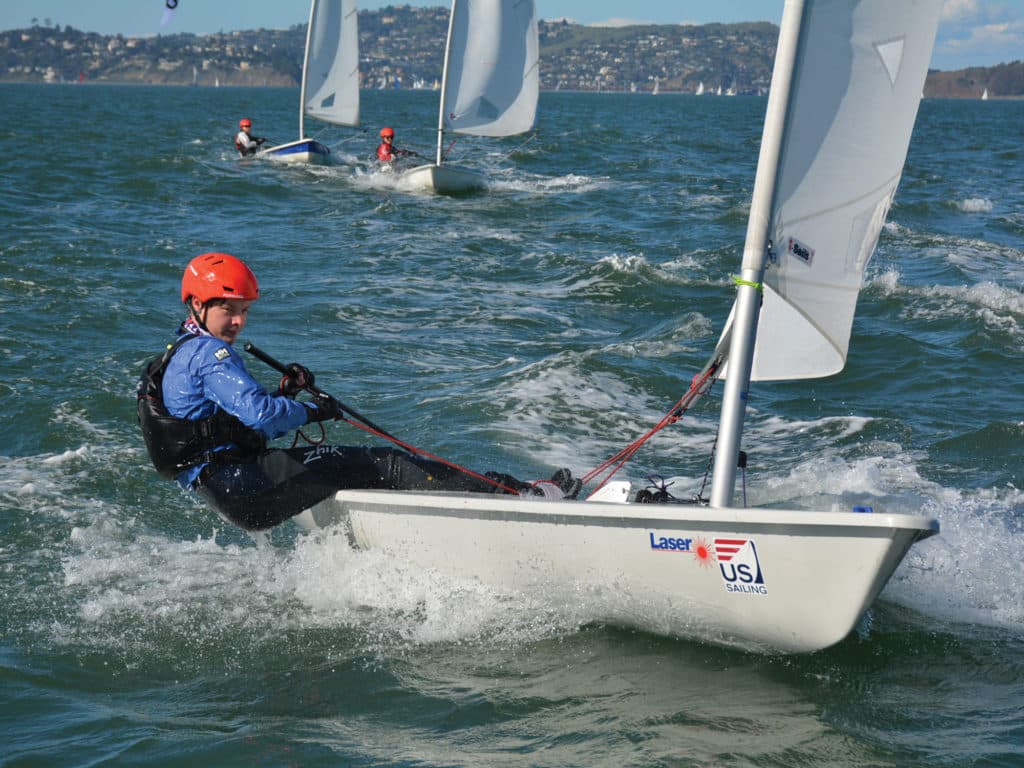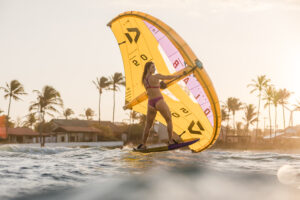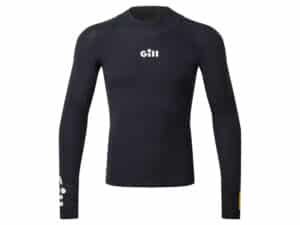
At MIT, in a single season, two members of the sailing team suffered head injuries so severe, they each had to abandon their studies and leave school for more than a year. As the joke that is not a joke has it, we’re talking about very expensive brains.
Those college sailing injuries happened five years ago, prompting a round of soul searching and—hey, it’s MIT—a look at the data. Coach Fran Charles relates: “The data showed us that sailing was almost on par with football for head injuries. We looked at each other. We agreed. This is crazy.” The team took steps and mandated helmets on those heads. As of 2021, helmet wearing remains policy at MIT. Not every sailor is happy with that, but the athletic department is.
Beginning last spring, my St. Francis YC added a helmet requirement for junior sailors, so here we are, talking about it. The United States is a long way from helmet use as a snowballing trend, but I expect to see more and more helmets in our sport, as in other sports. With that said, what you will find if you continue reading is not a clarion call for a helmet on every sailor. I’ll try instead to lay out the pros and cons, and why a yacht club would make this decision for our young sailors. Helmets are not a new thing, and the arguments are not new, for or against, but they continue to be rediscovered as if they were new. It’s time to push some buttons.
To begin, let’s acknowledge that a helmet might not prevent a concussion, especially in a severe head strike. If a helmet worked that magic, there would be a different conversation these days in the game of football. Instead, helmet or no, the sudden acceleration or deceleration of skull against brain produces trauma, affecting brain function. The effects can be mild or severe, but they accumulate over multiple incidents. Helmets can absorb some degree of impact and, logic would have it, lessen the trauma of a head strike. By their form, they can turn a boom strike into a glancing blow. Without doubt, they reduce cuts and contusions.
It is also true that a helmet makes a bigger target. And a poorly chosen helmet adds new risks of entanglement, or a risk of whiplash if a sailor hits the water in a fast crash. And somebody is sure to argue that helmets hamper hearing and peripheral vision.
RELATED: Concussion-Free Sailing
About that last bit: While we want our young sailors to purchase their own helmets—and the coaches offer guidance—the 20 that we bought as in-house stock were chosen to not cover the ears or block vision. That’s a compromise in terms of protection, but a necessary compromise. Let’s add that a close fit, clean outline, buoyancy and a quick-release chin strap are core requirements.
Several brands offer helmets claimed to meet sailing-specific needs, and we wound up with the same helmets preferred by Nacra 17 Olympic team members Anna Weiss and Riley Gibbs. “Fit is critical,” Gibbs says. “The kids should have their own, and then it’s just like having a pair of shoes. I see this as a progressive direction. Anna and I always train in our helmets, as if we were racing. At the crazy end of things, I once saw an F50 crack a helmet. Better that than crack a skull.” America’s Cup, SailGP—the role models are there.
StFYC’s fleet surgeon, Dr. Deepak Srivastava, has had kids in the program, and he says, “Given what we now know about repeated head injuries, even subtle, I am confident that requiring helmets is the right move.”
There’s another dimension, however. StFYC’s lead coach, Adam Corpuz-Lahne, brought our helmets proposal forward, and the way he sees it: “Helmets should make concussions less severe in most strikes, especially in the smaller ones that we ignore while they add up. They will also greatly reduce the nuisance strikes that interrupt a practice when a kid takes a bump to the head—probably not a serious injury—and a coach responsible for five boats has to leave four boats uncoached to deal with the situation. Practice comes to a stop. That’s why our sailing director, Brent Harrill, tells the sailors that wearing a helmet is not just about you. You’re wearing your helmet for the team. Then there’s the young kid who gets whacked, and perhaps there are tears, and if the kid is done and demands to go in, that becomes a safety situation of a different order. And that’s a kid who goes home thinking she/he did not have fun. Maybe sailing just lost that kid. And of course, with any kid telling you he’s fine [and] just seeing stars, that’s a different protocol.”
Our juniors sail on San Francisco Bay in a big sea breeze, with tidal-driven counter current kicking up chop about half the time (go figure). At American Yacht Club on Long Island Sound, the average wind is lower, the sea state is milder, and only younger sailors are required to wear helmets. As coach Kevin Broome tells it: “We have not seen any problems of reduced awareness or entanglement, and helmets have absolutely cut our rate of crying kids on the water and again on the dock. Kids get bumped and banged carrying rigs around. Helmets give them an added sense of security. It’s hard to not draw a connection to skiing. In the 1990s, people snickered at helmets, but when you go to the mountains now, almost everyone on skis or a snowboard wears a helmet without a second thought.”
Bicycles, skateboards, lacrosse—helmet sports are the norm for the coming generation. StFYC’s program requires helmets from when arriving at the dock to leaving the dock at the end of the day. A boat on a trailer, rigged and flapping, can do as much damage as your own boat under sail or the boat next door in a rounding. And in both high school sailing and college racing, rotation between heats is a danger point. It’s one thing to be aware of your own boom and quite another when someone flies in behind you, focusing elsewhere and not on you.
Helmets are not a new thing, and the arguments are not new, for or against, but they continue to be rediscovered as if they were new. It’s time to push some buttons.
Rereading, this feels one-sided. I need to add that Bowdoin College had a helmet requirement for two years, then dropped it. Coach Frank Pizzo says: “We started wearing helmets one fall semester after we had a rash of concussions. That season with helmets—no concussions. Then, in the second year with helmets, we had a big bump in concussions in the spring. We weren’t seeing the difference we were looking for, so we made helmets optional.
“No question, they prevent skull fractures, and for athletes who grew up playing helmet sports, they’re no big deal. Other people fidget in them. They also present a challenge in cold weather, when you need warm gear.” (If you don’t know, Bowdoin is on the coast of Maine, where it gets a mite chilly when the sun dips south.)
On San Francisco Bay, the sea breeze often peaks at 18 to 22 knots. That’s our reality, but in other realities, I would be surprised to see anyone wearing a helmet on a lake in Texas on a 97-degree, 6-knot day in July. This is not a simple thumbs-up or thumbs-down conversation. Along with requiring helmets, MIT retrofitted carbon booms, dramatically lowering weight and impact, but not every program has that budget. MIT also raised its booms, but they’re back down because you really do have to teach the muscle memory of an adequate duck.
So, at my club, the experiment begins. There’s been some whining, and I can imagine a hint of adolescent-cool tension in the air when we get to that first high school regatta next fall. But this is how we’re going to roll. In 1995, St. Francis YC—spurred by the drowning of a US Yachtsman of the Year in our Big Boat Series—became the first institution in the country to require “adequate flotation” for all participants in all of our races on all boats, keelboats included. There were howls. There was indignation. Looking back, we see that, yes, culture can shift.
Perhaps history is repeating. It may take me a while to get back to you on that.









